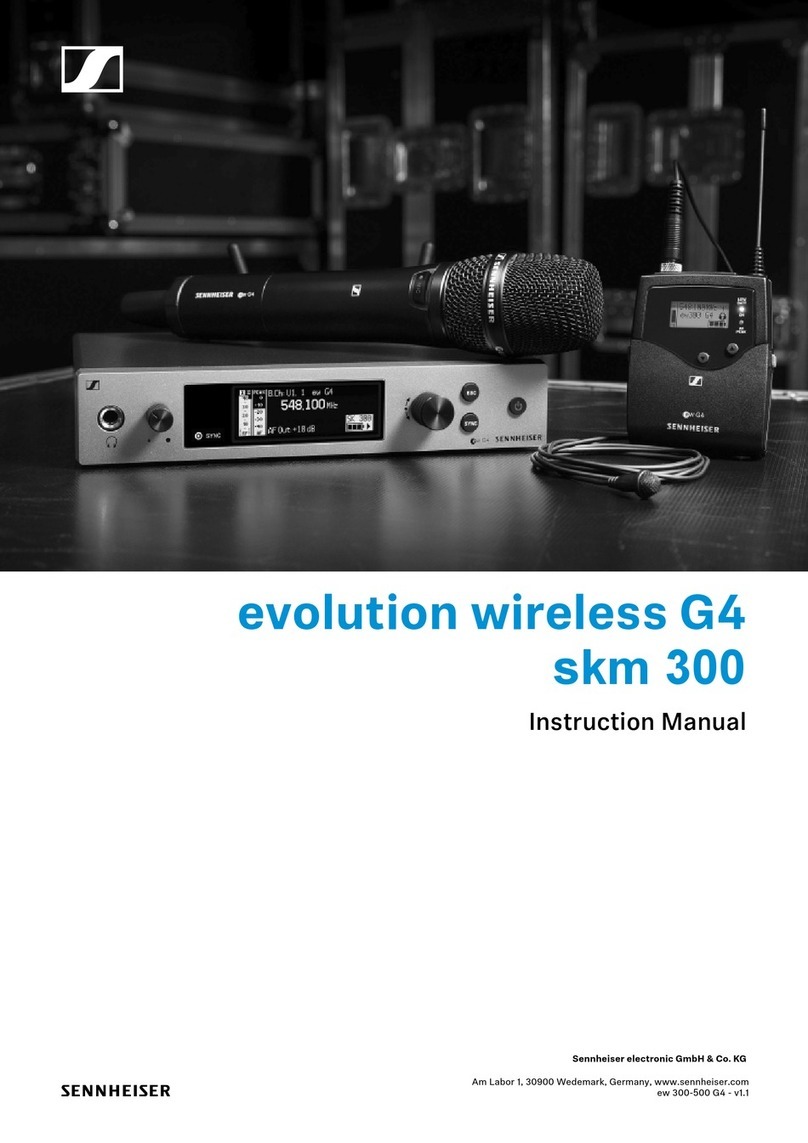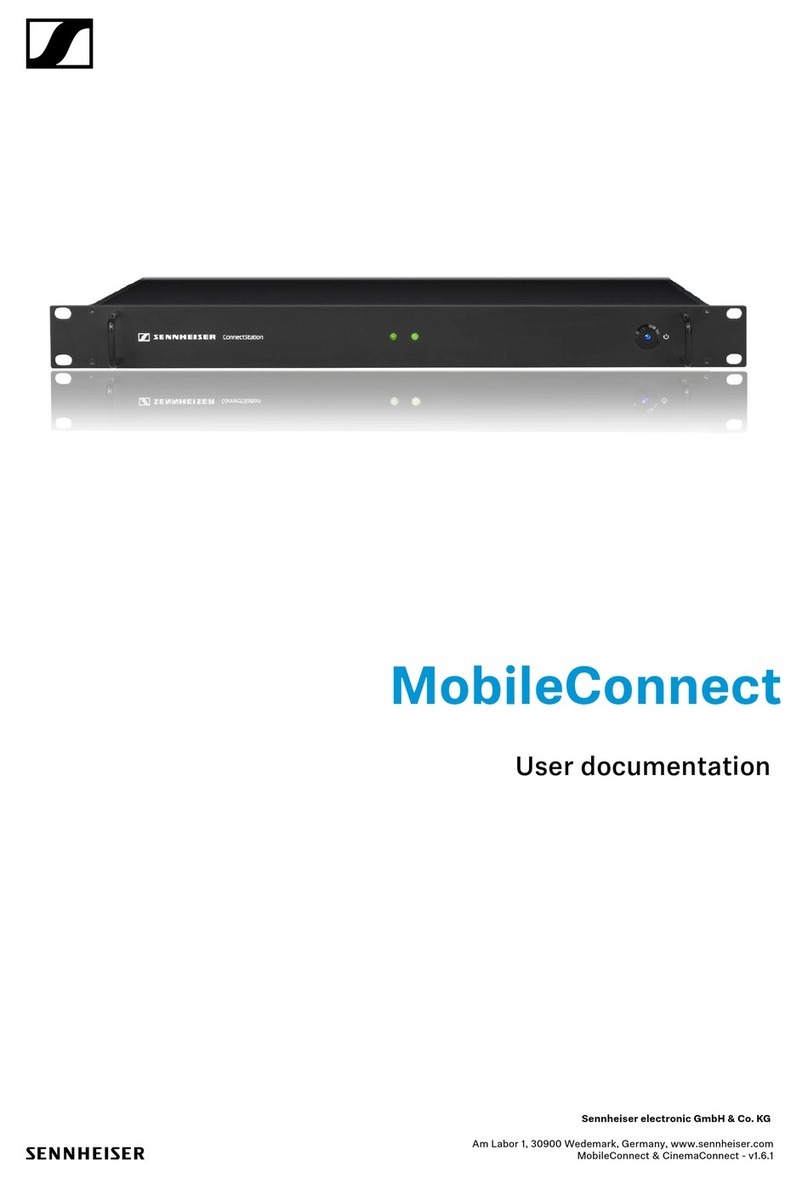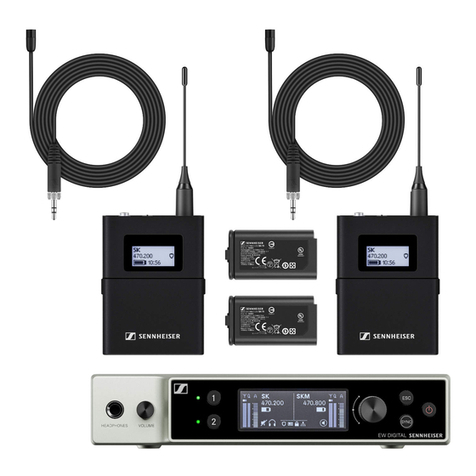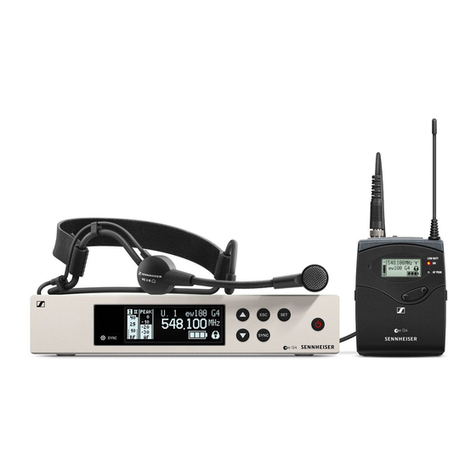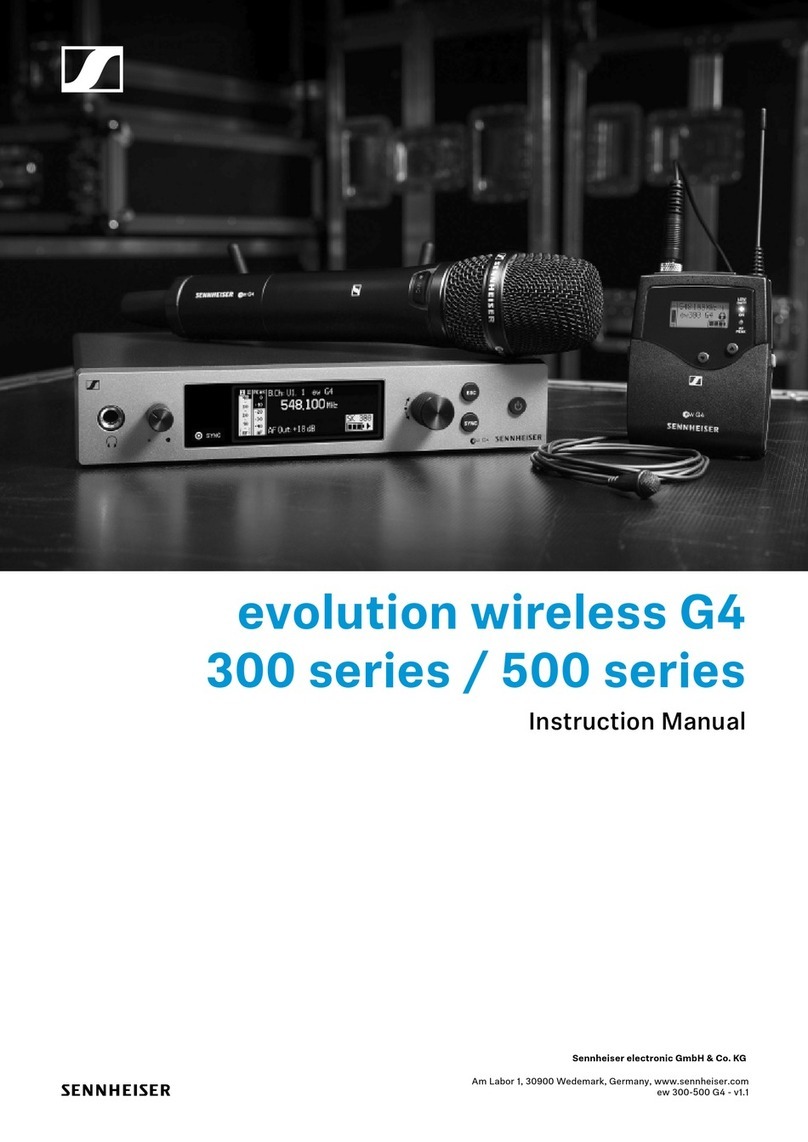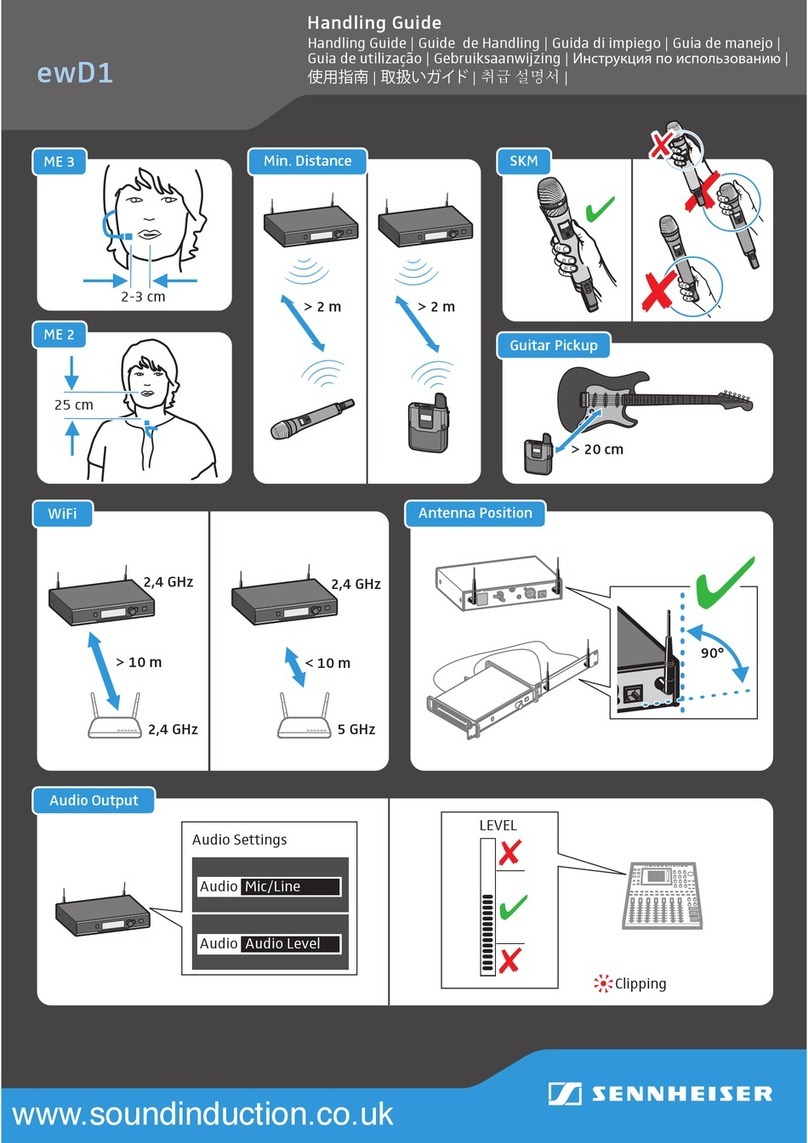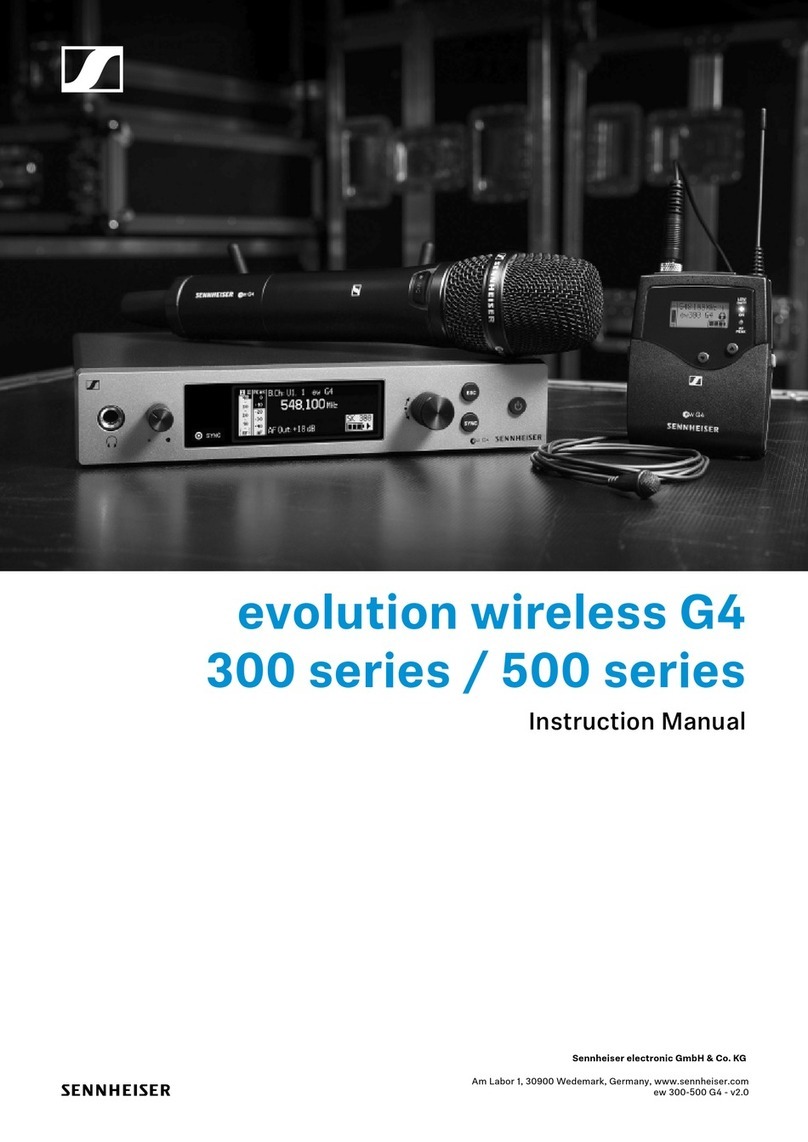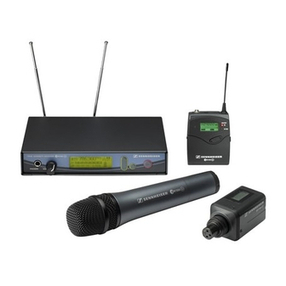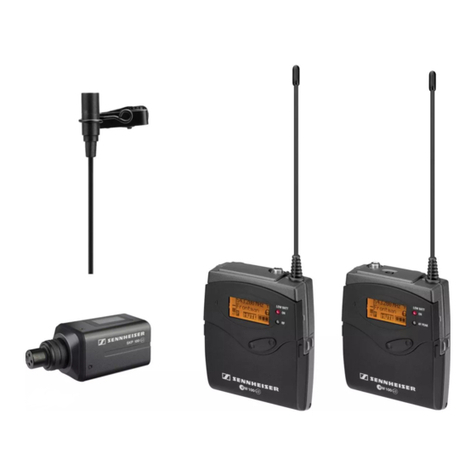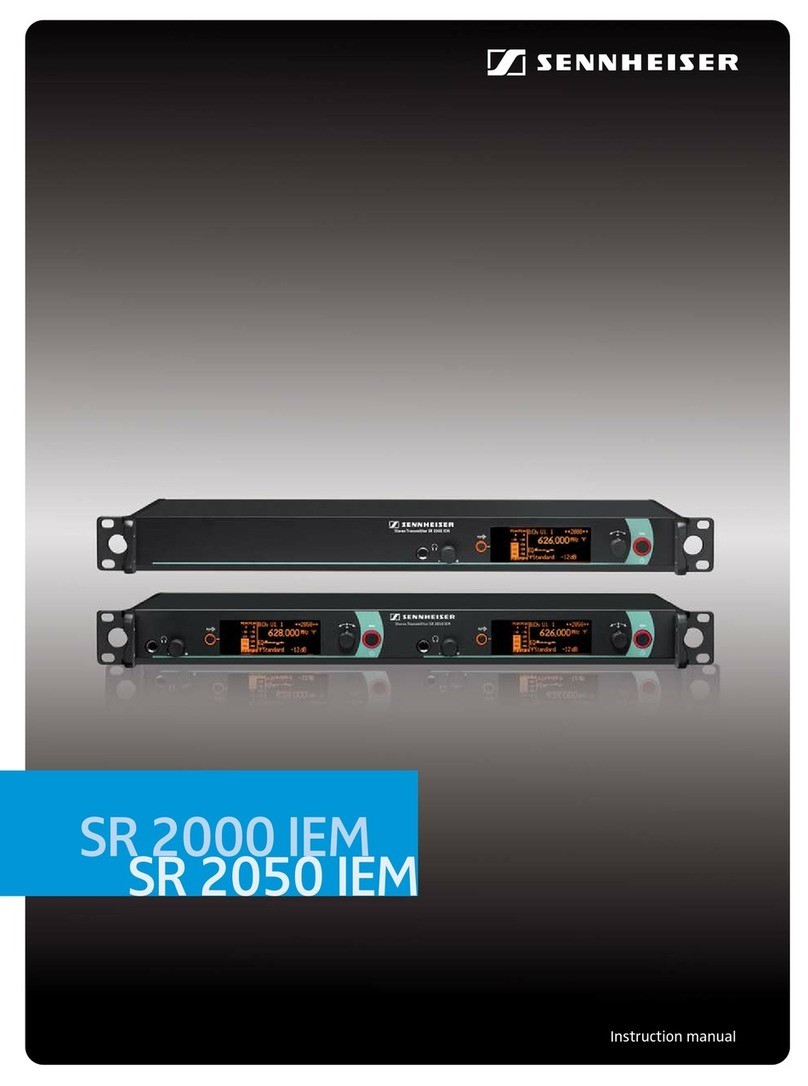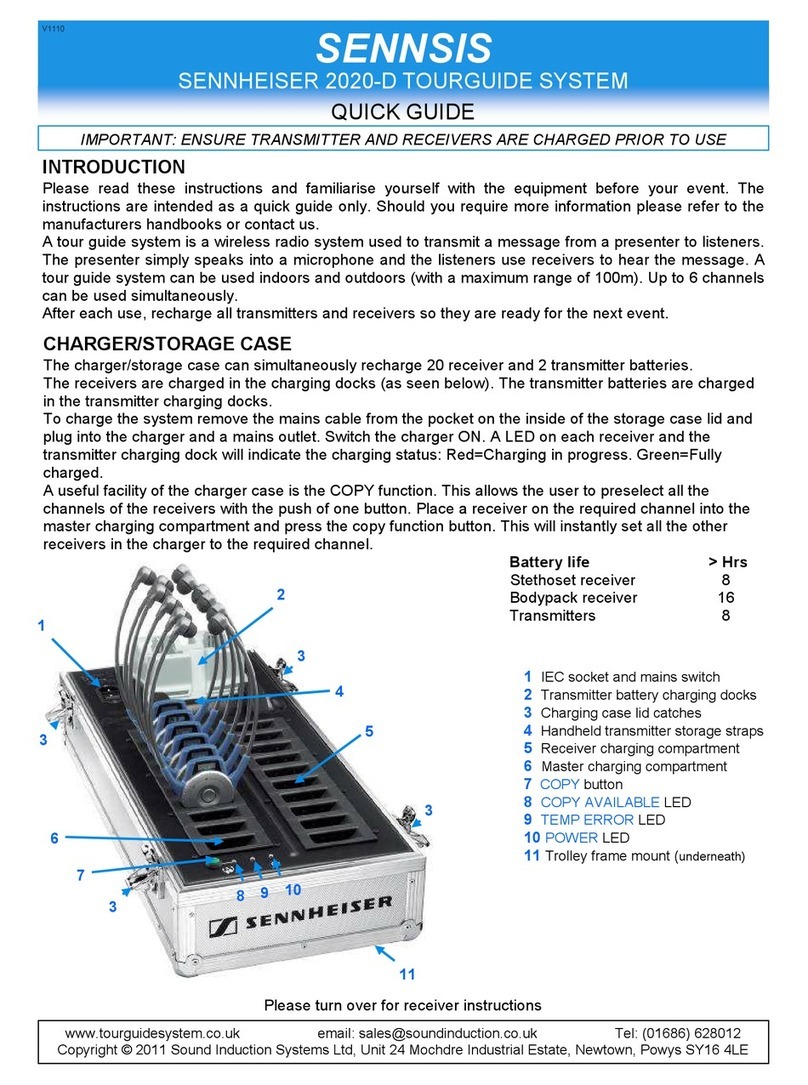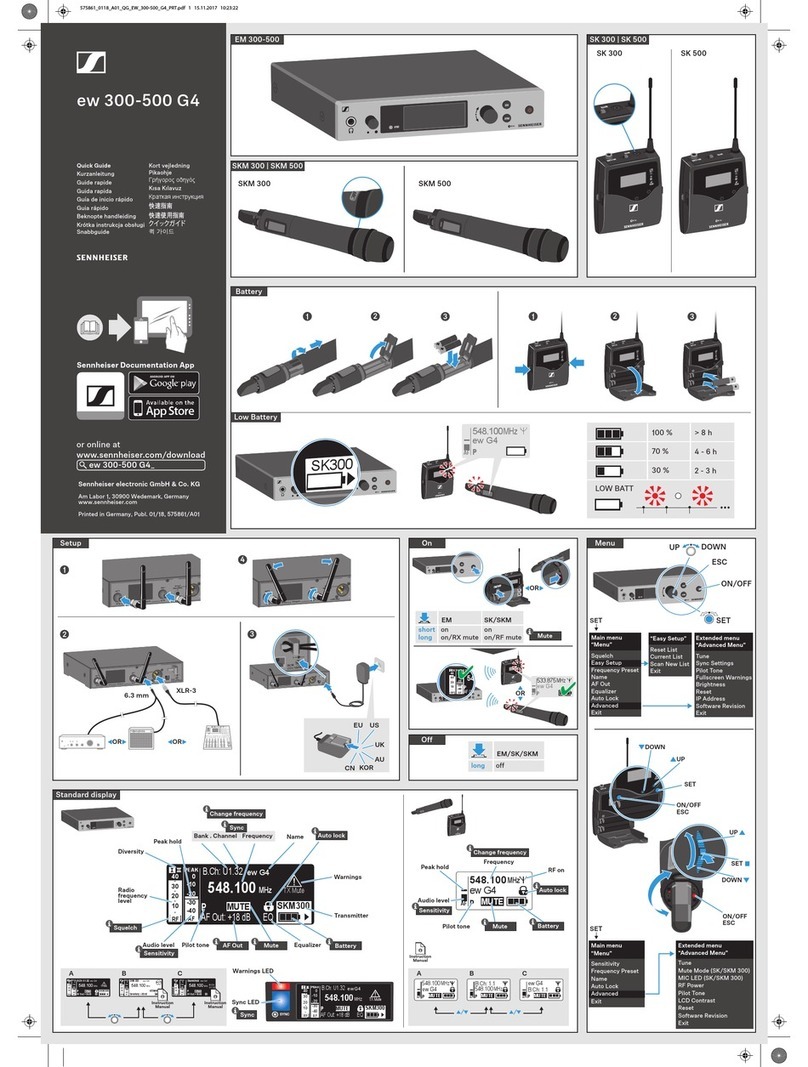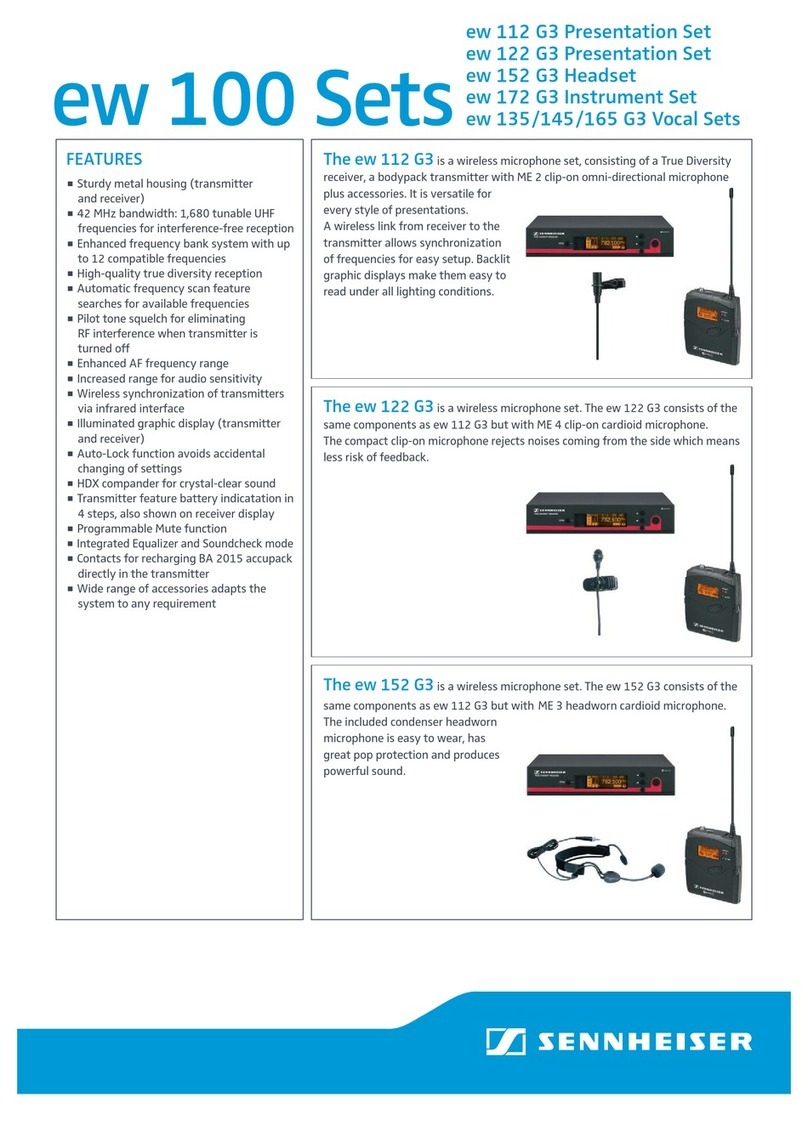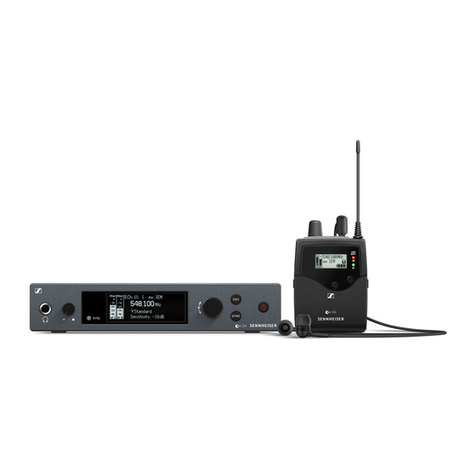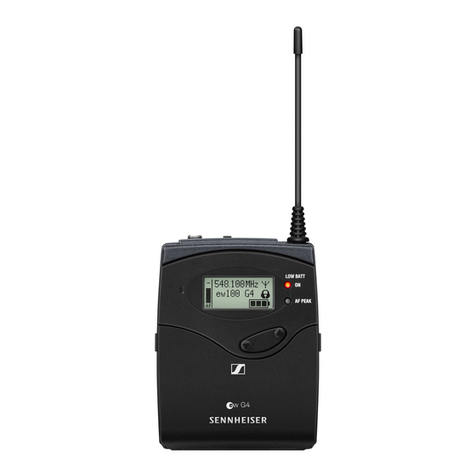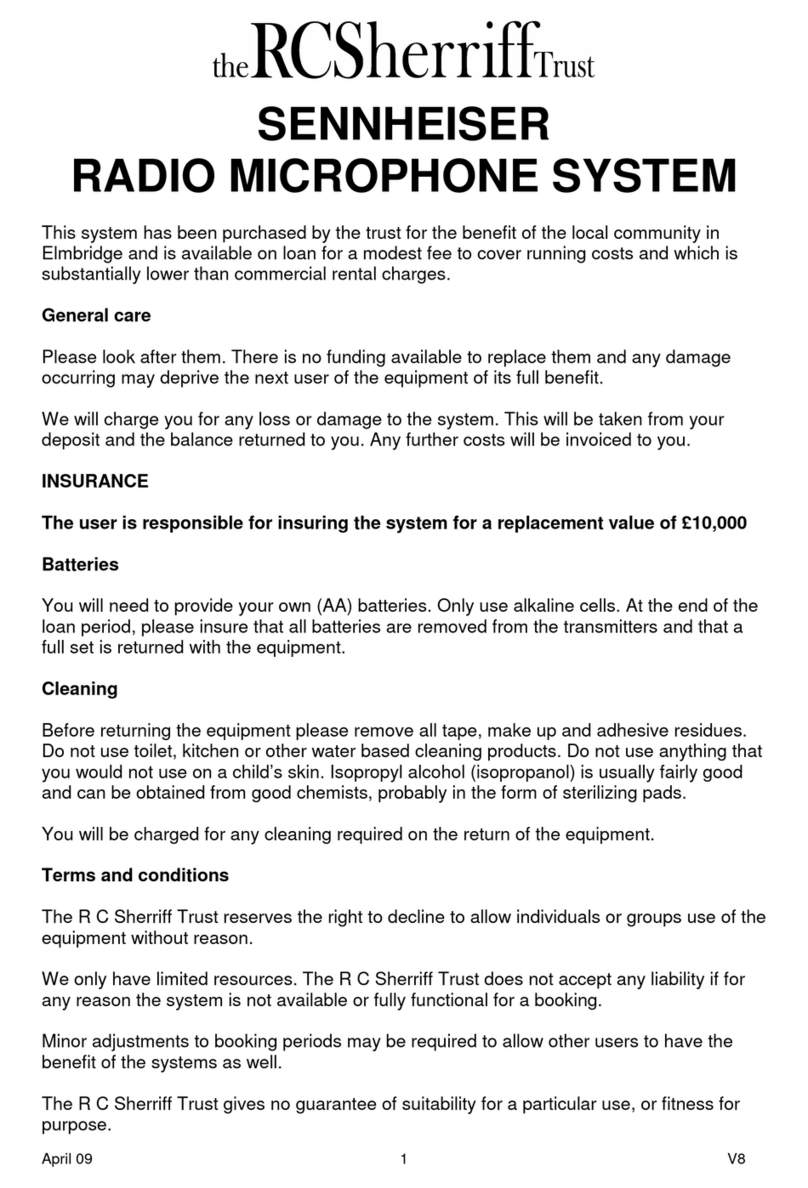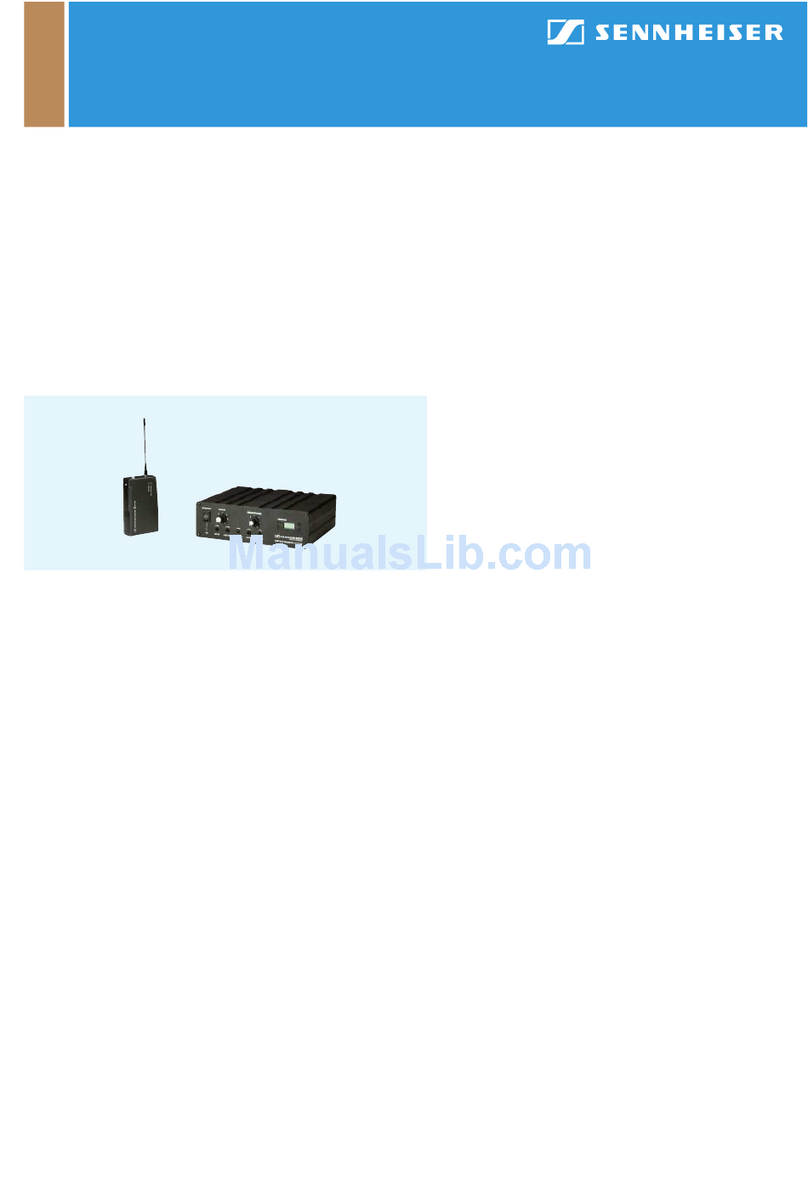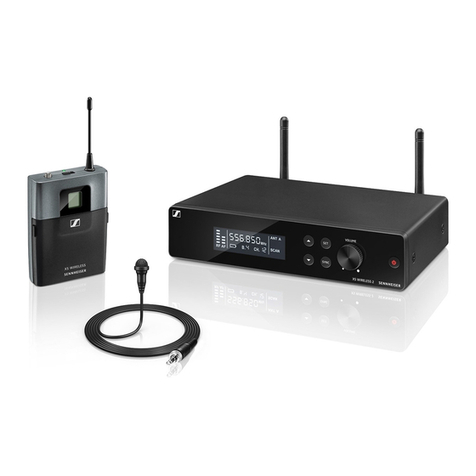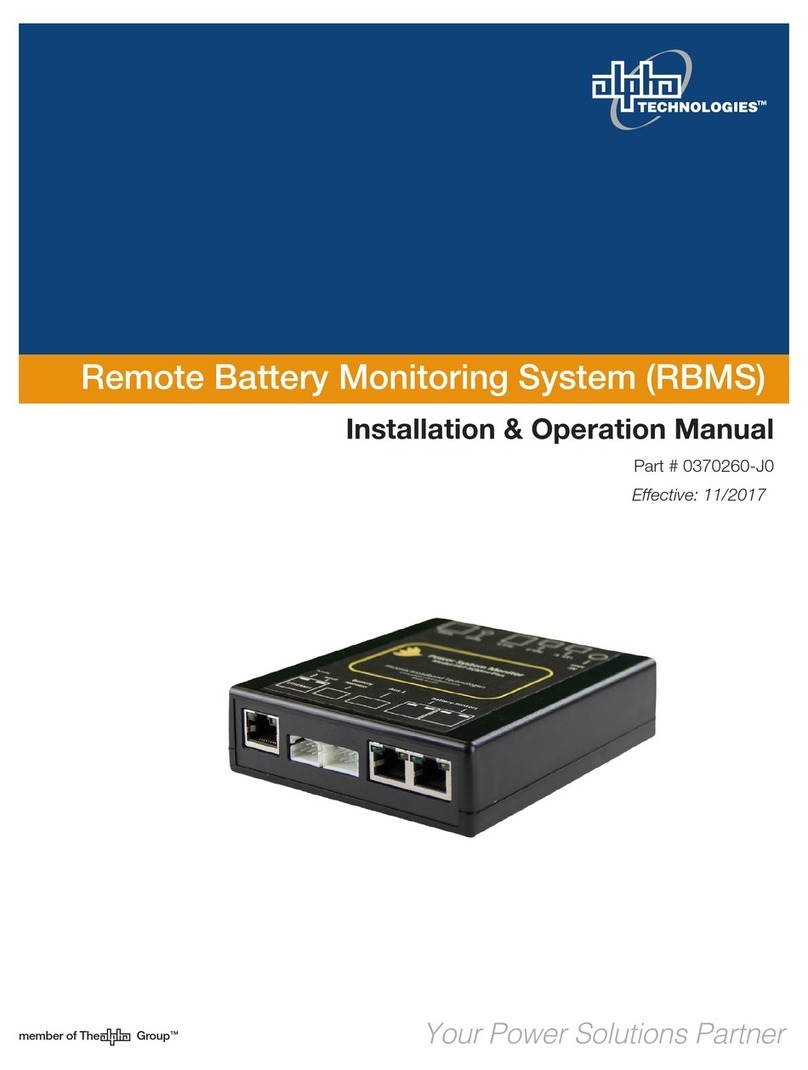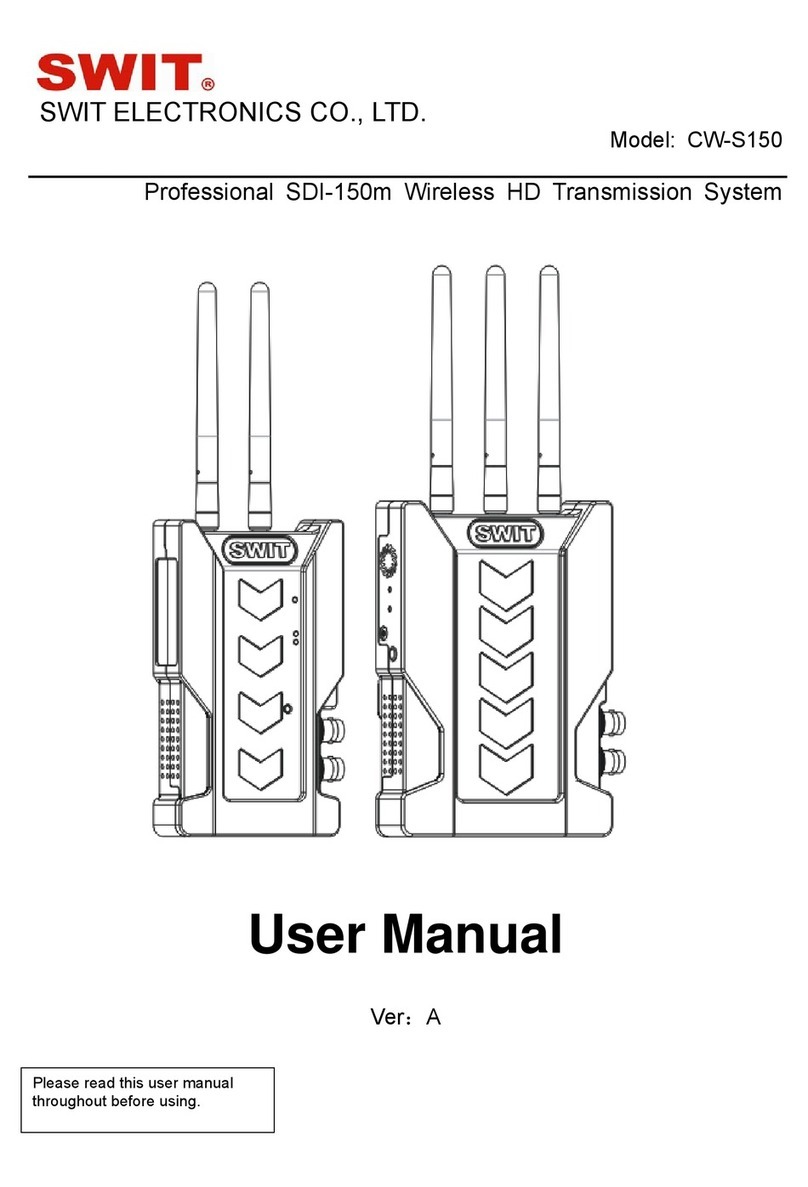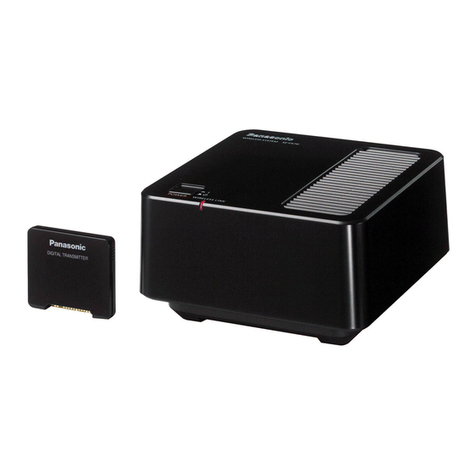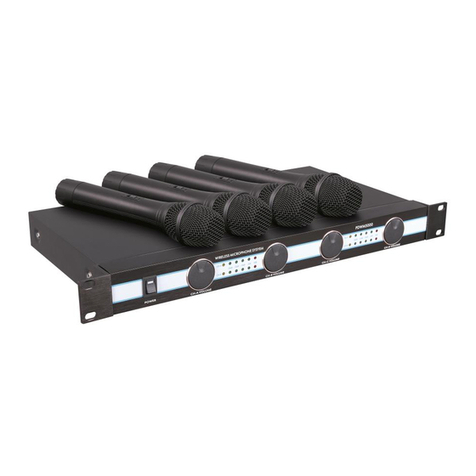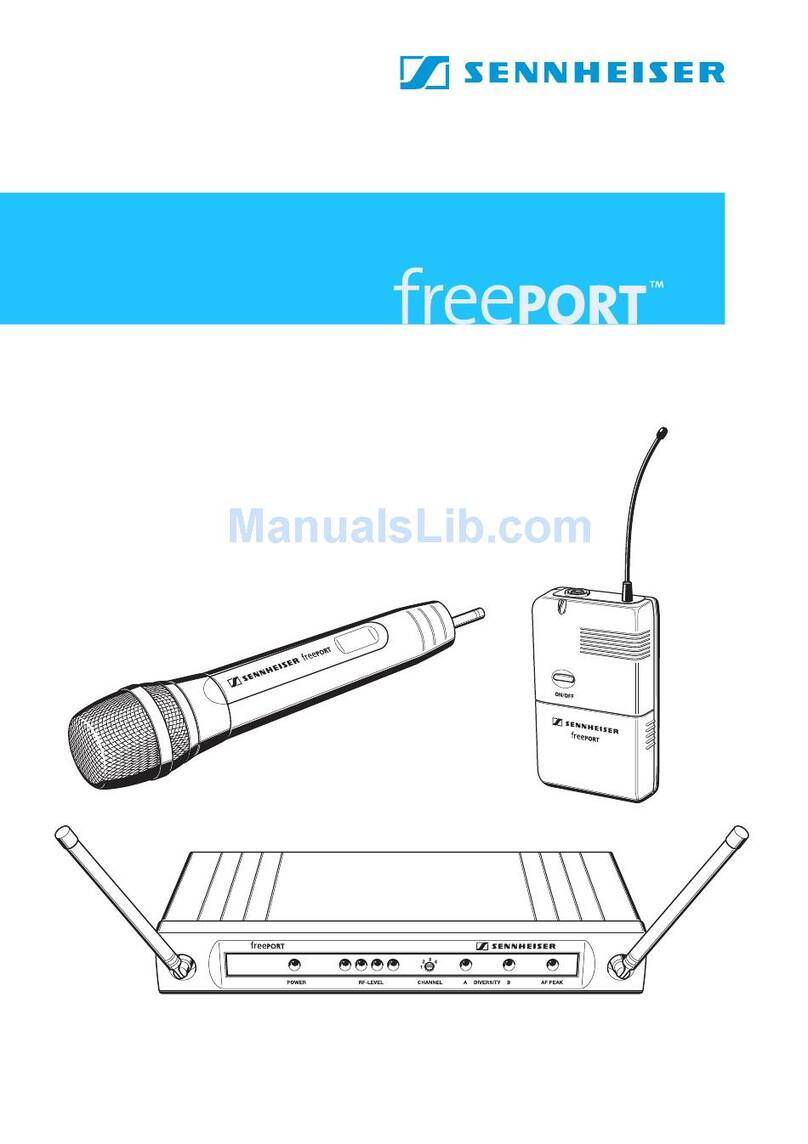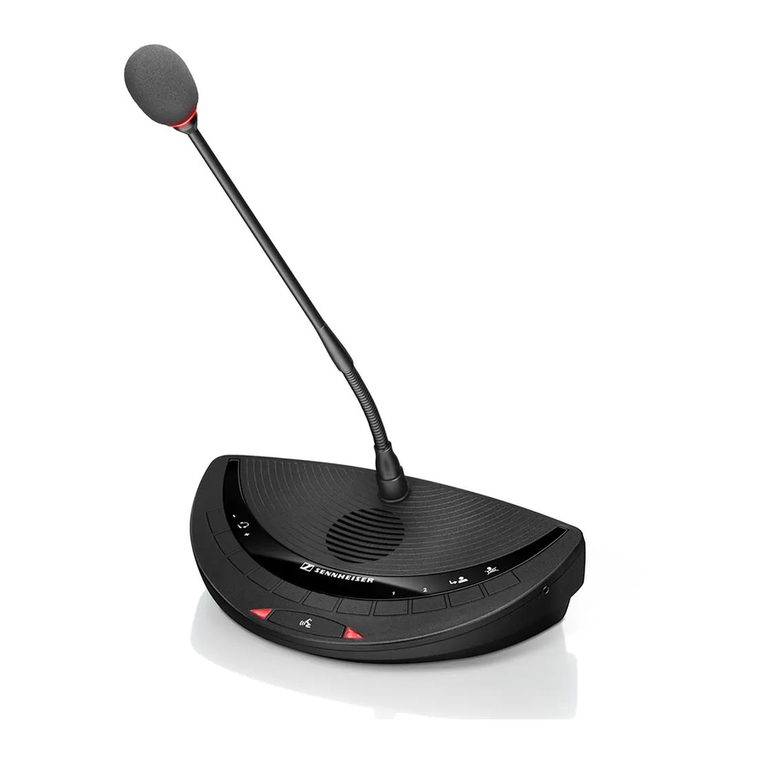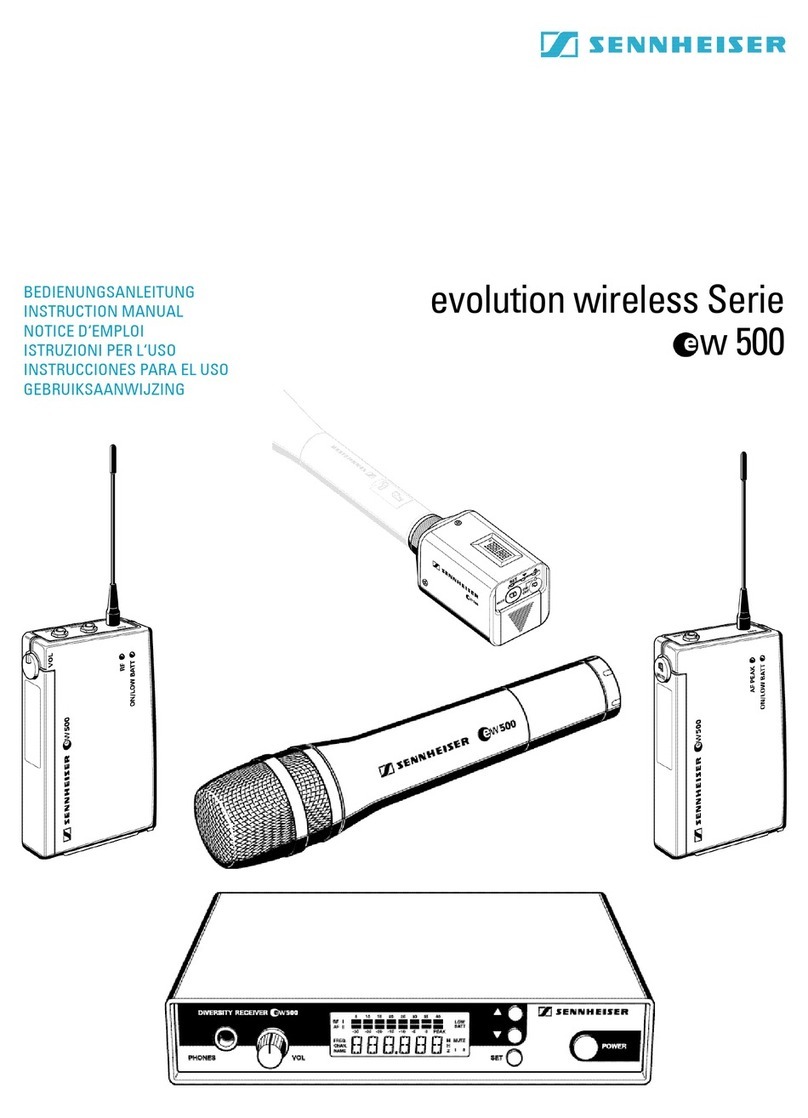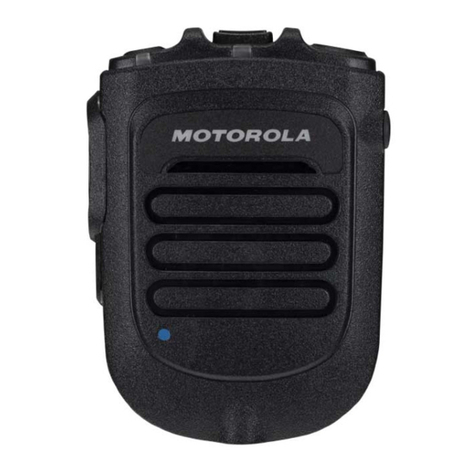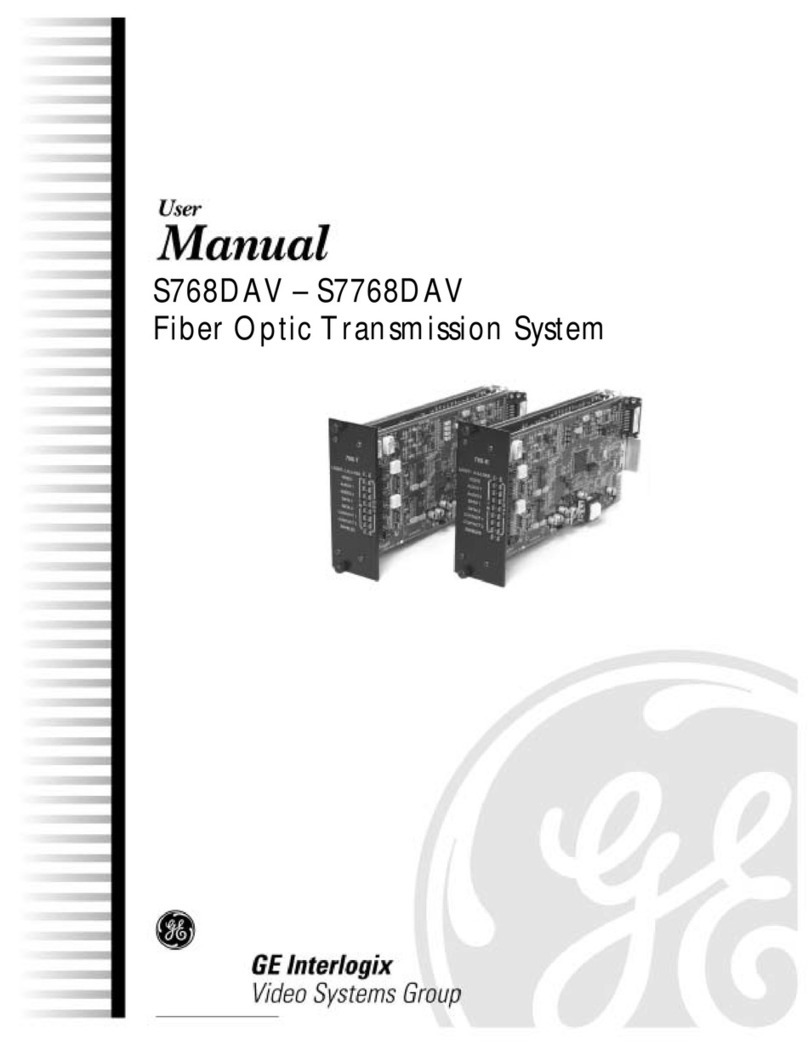0
1. Description
The SM 1008 wireless microphone
system consists of a battery-operated
miniature transmitter, Model SK 1008,
which can be equipped with several
different special microphones, and the
battery/AC operated receiver, Model
EM 1008, which can be operated with
a variety of special antennae.
1.1 Model SK 1008 Mikroport
transmitter
The Mikroport transmitter is operated
trom an ordinary 9 V battery, Standard
units are designed for two trequencies:
36.7 and 37.1 MHz. Two plug-in micro-
phones and seven special microphones,
which can be connected via short leads,
permit adaptation to even unusual appli-
cations. A plug-in antenna is supplied
with the transmitter.
a
1.2 Microphones
Two different plug-in microphones may
be combined with the Mikroport trans-
mitter into a single unit. The combi-
nation, which is no larger than a con-
ventional microphone, may be either
held in the hand or used as a lavalier
microphone via its built-in cord.
Model MD 1008 plug-in microphone,
which has spherical characteristics, is
preferable whenever it is essential to
obtain minimum sensitivity to vibration,
and where (especially during interviews)
several persons speak into the micro-
phone trom different directions. However,
where there is a high ambient noise
level, reverberation, or the possibility of
acoustic feedback, it is recommended
that the Model MD 4008 plug-in micro-
phone, which has super-cardioid di-
rectional characteristics be employed.
Where concealment of the transmitter
is desired, special microphones may
still be used, connected to the micro-
phone socket of the SK 1008 transmitter
via a short cable. The most frequently
used unit, for this application, is the
Model MD 214/1 Lavalier suspension
microphone. Besides double internal
suspension, which renders this micro-
phone strongly resistant to noises pro-
duced by friction, the Model MD 214/1
dynamic lavalier microphone has a
shaped frequency response that com-
pensates for attenuation of high fre-
quencies caused by the chin of the
speaker. The Model 405-T directional
hand-held microphone can be used in
a similar fashion, worn in an outside
pocket, permitting the transmitter to be
switched on and off by means of the
switch on the microphone. The Model
MM 61-2 fountain pen microphone and
Model MM 24-2 lapel microphone are
even more inconspicuous, although
their transmission quality is not as
good as that of the previously-mentioned
microphones. Where stringent quality
requirements exist, the Mikroport trans-
mitter mayaiso be connected to one
of our transistorized capacitor micro-
phones via a special cable, Model
KAM-1. Either the Model MKH 104 with
spherical characteristics, the Model
MKH 404 with cardioid characteristics,
or the Model MKH 804 with ultra-direc-
tional characteristics, may be employed.
Power for these microphones is obtained
from the Mikroport transmitter battery.
1.3 Model EM 1008 Mikroport
receiver
This newly-developed receiver may be
operated from the AC line or from a
standard 9 V battery. The two antenna
inputs (60-ohm and 240-ohm impedance)
permit the use of different antennae.
Transmitter field strength can be con-
tinuously monitored with its built-in
meter. A balanced, ungrounded 1.55 V
audio output provides a signal at less
than 2 % distortion. The signal may
also be monitored simultaneously at
variable volume via a built-in loud-
speaker.
1.4 Antennae
The wire antenna supplied with the
Mikroport receiver does not have the
same reception performance as the
Model TA 203 telescopic accessory
antenna. If a Ionger antenna cable is
required, e. g., for diversity reception,
(See Section 4.1), it is recommended
that a tuned 240-ohm dipole be prepa-
red with a cable of suitable length.
2. Preparing the equipment for
operation
Reliable operation of the entire system
can only be guaranteed by the manu-
facturer if all parts used are original
Sennheiser products and no unautho-
rized alterations have been made by a
third party.
